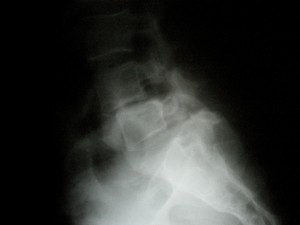X-Rays
X-Rays
Often times patients with back or neck pain resolve their symptoms without any significant interventions. But if the pain persists, naturally, patients are concerned about the cause of pain. The natural reaction is to ask for x-ray studies of the hurtful area. X-rays can be beneficial for the diagnosis in cases of trauma. But beyond that, x-rays have not been proven to help in the treatment of most incidents of neck or back pain.
Still, if pain persists for some time, and you have a history of trauma, osteoporosis, or any possibility of neoplasm, x-rays are a relatively inexpensive screening tool for displaced fractures, confirmation of disk degeneration, identification of spinal instabilities, and in rare instances, identification of neoplasms, or congenital deformities.
Recently, there is more and more information about the risks of radiation exposure. What we do know is that radiation risks are cumulative. In other words, the fact that you were exposed to radiation, does not diminish the risks over time. Fortunately x-rays are relatively low exposures compared to other modalities.
CT scans and bone scans have a significantly higher radiation exposure than x-rays. If you have concerns about these studies, please discuss with you physician. But please remember, every study or intervention has a benefit and a risk. You physician will weigh these factors as he/she recommends medical treatments. If you want an good site to discuss risks of medical radiation, click HERE.
For women, please tell your physician or the x-ray technologist if you think there is a possibility you are pregnant.
Last modified: October 22, 2019









